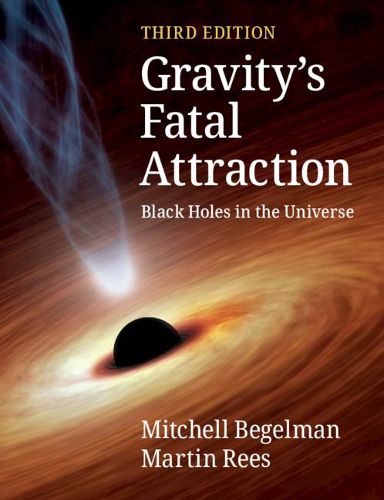Readings Newsletter
Become a Readings Member to make your shopping experience even easier.
Sign in or sign up for free!
You’re not far away from qualifying for FREE standard shipping within Australia
You’ve qualified for FREE standard shipping within Australia
The cart is loading…






Richly illustrated with the images from observatories on the ground and in space, and computer simulations, this book shows how black holes were discovered, and discusses what we’ve learned about their nature and their role in cosmic evolution. This thoroughly updated third edition covers new discoveries made in the past decade, including the discovery of gravitational waves from merging black holes and neutron stars, the first close-up images of the region near a black hole event horizon, and observations of debris from stars torn apart when they ventured too close to a supermassive black hole. Avoiding mathematics, the authors blend theoretical arguments with observational results to demonstrate how both have contributed to the subject. Clear, explanatory illustrations and photographs reveal the strange and amazing workings of our universe. The engaging style makes this book suitable for introductory undergraduate courses, amateur astronomers, and all readers interested in astronomy and physics.
$9.00 standard shipping within Australia
FREE standard shipping within Australia for orders over $100.00
Express & International shipping calculated at checkout
Stock availability can be subject to change without notice. We recommend calling the shop or contacting our online team to check availability of low stock items. Please see our Shopping Online page for more details.
Richly illustrated with the images from observatories on the ground and in space, and computer simulations, this book shows how black holes were discovered, and discusses what we’ve learned about their nature and their role in cosmic evolution. This thoroughly updated third edition covers new discoveries made in the past decade, including the discovery of gravitational waves from merging black holes and neutron stars, the first close-up images of the region near a black hole event horizon, and observations of debris from stars torn apart when they ventured too close to a supermassive black hole. Avoiding mathematics, the authors blend theoretical arguments with observational results to demonstrate how both have contributed to the subject. Clear, explanatory illustrations and photographs reveal the strange and amazing workings of our universe. The engaging style makes this book suitable for introductory undergraduate courses, amateur astronomers, and all readers interested in astronomy and physics.